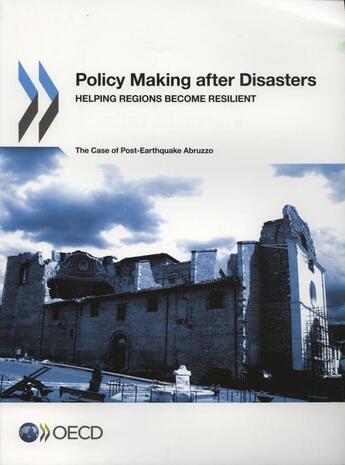-
Date de parution : 29/06/2013
-
Editeur :
Ocde
-
EAN : 9789264189546
-
Série :
(-)
-
Support :
Papier
Résumé:
Abruzzo is at a tipping point: despite economic, cultural and natural strengths, the region is facing declining economic growth, ageing population and a reduction in outside economic aid. The devastating earthquake that hit the regional capital L´Aquila and its surroundings on 6 April 2009... Voir plus
Abruzzo is at a tipping point: despite economic, cultural and natural strengths, the region is facing declining economic growth, ageing population and a reduction in outside economic aid. The devastating earthquake that hit the regional capital L´Aquila and its surroundings on 6 April 2009 caused 309 deaths and was a significant economic shock, jeopardizing the long-term growth prospects of an already vulnerable region.
To increase its resilience to current and future shocks, Abruzzo must encourage innovation-driven growth, based on knowledge and better use of skills, and redesign the city of L´Aquila through technological upgrade to make it more attractive to outsiders and improve the quality of life of its residents.
The report suggests that Abruzzo should focus on endogenous resources to build its long-term development strategy and, at the same time, to increase the external openness of the regional system to attract more entrepreneurs, students, foreigners and external capital. The economic development and quality of societal life in Abruzzo will strongly depend on how private and public actors will make the best use of existing knowledge, strengthening the cultural and economic networks as a major tool for growth; as well as promoting information sharing, transparency, accountability and community engagement to improve decision making.
More broadly, the issues raised in the report can help other governments to rethink regional policy, for both regions vulnerable to natural disasters and for those facing long-term decline. As such, eight guiding recommendations for building resilient regions after a disaster are drawn. These guiding recommendations can provide a framework for policy making in other OECD regions.
Donner votre avis














